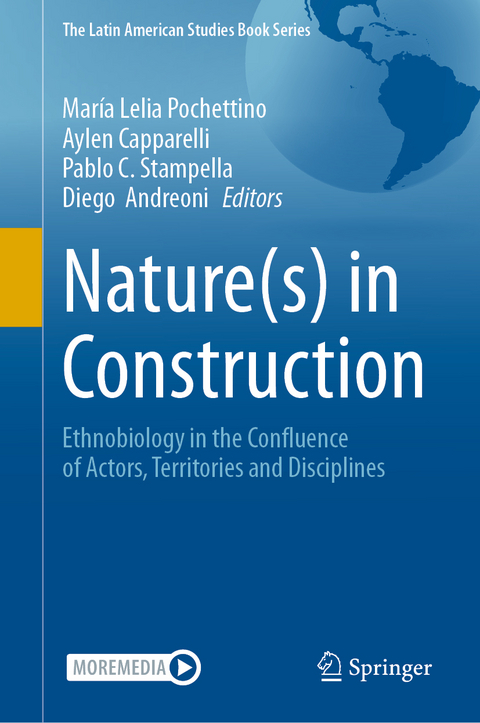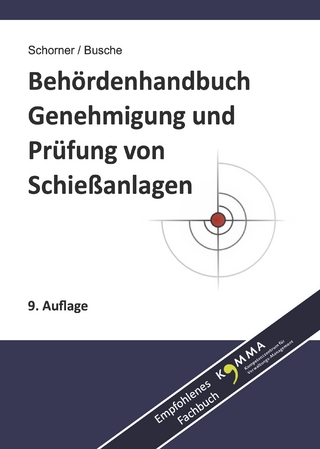
Nature(s) in Construction
Springer International Publishing (Verlag)
978-3-031-60551-2 (ISBN)
This book provides the state of the art of ethnobiology in Argentina and related Latin American countries, highlighting timely trends and topics. It synthesizes studies resulting from the III Jornadas Argentinas de Etnobiología y Sociedad (III JAES-3rd Argentinian Meeting of Ethnobiology and Society), convened in La Plata in 2021. As a relatively new academic development, ethnobiology integrates approaches from different points of view, such as biology, anthropology, geography, history, linguistics, and, in a crucial recent advance, local perspectives. Consequently, this volume contains 33 contributions from 86 authors of different countries, orientations, and disciplines-but all related to interrelationships between people/s and the natural environment.
Chapters cover a diverse array of topics, ranging from biocultural relationships and their historical construction through time to conservation of biocultural and agrodiversity, ethnomycology, ethnophycology, and meliponiculture and beyond. The volume's main goal is to propitiate the preservation of biocultural diversity through the application of ethnobiological wisdom in a global context characterized by the accelerated loss of traditional knowledge. The contributions aim to transcend the nature/culture dichotomy, emphasizing the inextricable relationship between communities and their environment and the importance of acting jointly in the construction of the inhabited landscape and local identity.
María Lelia Pochettino. Anthropologist. Doctor in Natural Sciences. Head of the LEBA. Professor of the undergraduate matter Applied Botany and Head of the Postgraduate Secretary, FCNyM, UNLP. Researcher at the CONICET, Argentina.
Aylen Capparelli. Biologist. Doctor in Natural Sciences. Head of the GIADA. Professor of the undergraduate matter Applied Botany and of the postgraduate module of Archaeobotany, FCNyM, UNLP. Researcher at the CONICET, Argentina.
Pablo C. Stampella. Biologist. Doctor in Natural Sciences. Graduate Assistant of the undergraduate matter Introduction to Botany and of several Postgraduate matters, FCNyM, UNLP. Researcher at the CONICET, Argentina
Diego Andreoni. Anthropologist. Doctor in Natural Sciences. Graduate Assistant of the undergraduate matter Applied Botany and of the postgraduate module of Archaeobotany, FCNyM, UNLP. Researcher at the CONICET, Argentina.
Part 1. Biocultural Diversity and its Construction in Latin America.-Chapter 1. ntroduction: A Review of the State of the Art of Ethnobiology in Argentina and related Latin American Countries.- Chapter 2. Domestication of Species and Landscapes in Mesoamerica.- Chapter 3. Trees in the Conformation of Relational Landscapes in the North of Mendoza (Central Western Argentina) from the Pre-Hispanic Period to the Modern Day.- Chapter4. The Immateriality of Cultivated Plants in the Context of Rio Negro Region (Brazilian Amazon).- Chapter 5. Food Sovereignty: Shared Knowledge and Experiences in Argentine Ethnobiology and Archaeology.- Chapter 6. Local Knowledge, Food, Territory and Biodiversity. Case Studies from Mexico and Brazil .- Chapter 7. Criollos from the "Chaco Húmedo Formoseño". Some Aspects of their Ethnomedicine .- Part 2. Methodological Approaches to the Study of Biocultural Diversity .- Chapter 8. Methodological Diversity and Reflexivity in Ethnobiological Research .- Chapter 9. Confessional Narrative of Patriarchal Misconceptions in Ethnobiological Studies of Northern Patagonia .- Chapter 10. Urban Ethnobiology: a Space for Reflection on the Relationships Between People and their Environment in Multicultural Contexts.- Chapter 11. Studies about Environmental Change and Local Knowledge in Latin America .- Chapter 12. Conservation and Identification of Botanical Materials in Ethnobiological Studies .- Chapter 13. Socio-Anthropological Holism and the Origins of French Ethnobotany .- Chapter 14. "We are the Seeds": Formal Teaching of Ethnobiology .- Chapter 15. Dialogues with the Community: Knowledge Exchange from Ethnobiology .- Part 3. The Ethnobotany as a Theoretical and Practical Turning Point between Cultural and Biological Conservation: Valorisation Tools Linking Tradition and Innovation .- Chapter 16. Contributions of Ethnobotanics to the Use and Conservation of Cactaceae Biocultural Heritage in Northwestern Córdoba. Identity Studies, Agro-diversity and Conservation of Traditional Practices .- Chapter 17. Following the footsteps of ethnobiologists in the Andresito Peninsula palmitales. Basic and applied science as indissoluble parts when local actors are involved .- Chapter 18. Development of Meliponiculture in Argentina, Ethnobiology and Melissopalynology as Tools for Progress .- Part 4. Ethnophycology and ethnomycology .- Chapter 19. Ethnophycology and Ethnomycology: Two Fields of Study with Great Potential .- Chapter 20. Women Seaweed Gatherers of Queilen (Chiloé, Chile) .- Chapter 21. Ethnomycology of South-East Mexico .- Part 5. Historical ethnobiology and the meaning of the living beings in the documental sources .- Chapter 22. Research on Historical Ethnobotany carried out by The Laboratory of Ethnobotany from The Argentine Museum of Natural History .- Chapter 23. Plant Complexes and the Importance of Context in Historical Ethnobotany Identifications .- Chapter 24. An Approach to Qom Ethnobotany of the Nineteenth Century based on the Work of Ángel Carranza .- Chapter 25. Historical Ethnobotanical Documentation by Means of Images .- Part 6. Pre- and Post-Contact Plant Management: a Temporal Vision about Cultural Elections Related to Plant Modes of Use in Past Conjunctural Contexts .- Chapter 26. Post-conquest Early Changes in Phyto-cultural Systems from the Analysis of Food: a Synthesis for the Argentine Arid Diagonal with Emphasis on the "Gobernación de Tucumán" -Governorate of Tucumán- .- Chapter 27. Advances in Archaeobotany of Central-Eastern Argentina. Dynamics in the Use of Plants from the Early Holocene to Colonial Times Through the Analysis of Micro and Macro Plant Remains .- Chapter 28. The Trees in the Construction of Landscapes in the Argentine Pampean Region. Changes, Continuities and Resignifications in the "Primera Estancia" of Magdalena (Buenos Aires) .- Chapter 29. Plant Consumption in the Northern Patagonian Archipelago (41-47° S, Chile) since 6000 Years BP to Historical Times: an Integrative Vision through Ceramic Use Residues and Human Dental Calculus .- Part 7. The Archaeofauna and its Narratives .- Chapter 30. Herders and Llamas, Companion Species in the Southern Andes during the Last Three Millenia .- Chapter 31. Taphonomy and Archaeofaunas: Friends with Benefits? .- Chapter 32. Multiple Aproaches for Archaeozoological Studies in Argentina .- Chapter 33. Variations in the Isotopic Niche of South American Camelids. A Vision from Applied Zooarchaeology.
| Erscheinungsdatum | 17.09.2024 |
|---|---|
| Reihe/Serie | The Latin American Studies Book Series |
| Zusatzinfo | XXII, 570 p. 5 illus. |
| Verlagsort | Cham |
| Sprache | englisch |
| Maße | 155 x 235 mm |
| Themenwelt | Naturwissenschaften ► Geowissenschaften |
| Sozialwissenschaften ► Soziologie | |
| Schlagworte | Archaeobotany • Archaeozoology • biocultural diversity • ethnobiology • Gender and ethnicity • Landscape construction • Latin America |
| ISBN-10 | 3-031-60551-9 / 3031605519 |
| ISBN-13 | 978-3-031-60551-2 / 9783031605512 |
| Zustand | Neuware |
| Haben Sie eine Frage zum Produkt? |
aus dem Bereich


